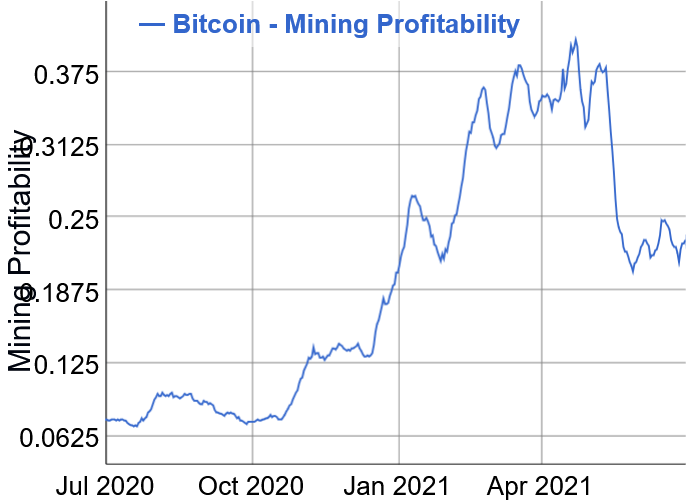Bitcoin mining difficulty, or the measure of how hard it is to compete for mining rewards, is expected to drop almost 27% in less than a day, as mining pool BTC.com estimates at 11:27 UTC.
This would come as the third drop in a row and would be the highest one ever, followed only by the 18% correction seen in October 2011.
The mining difficulty reached its all-time high of 25.05 T in mid-May, and the upcoming plunge would knock it down to 14.63 T, a level not seen since early April 2020.

The mining difficulty of Bitcoin is adjusted around every two weeks (or every 2016 blocks, to be precise) to maintain the normal 10-minute block time. However, the 7-day simple moving average block time on July 1 was 16.8 minutes, the highest it's been since December 2009. It's been consistently rising since mid-June as hashrate, or the computational power of the network, has been dropping since June 9 due to a regulatory crackdown on BTC miners in China. Between then and July 1, the 7-day simple moving average hashrate is down 41%.
In the past week, miners have been spending more coins than they've been holding - more so than in the previous three months, according to ByteTree.

___

At 11:27 UTC, BTC trades at USD 33,241 and is down by 1% in a day, increasing its weekly losses to 4%.
Meanwhile, based on a survey of the network by the recently formed Bitcoin Mining Council, the Bitcoin mining sector has reached a 56% sustainable power mix in Q2 of 2021, "making Bitcoin one of the cleanest industries in the world," as one of the Council's founders, the MicroStrategy head Michael Saylor said.
The first voluntary survey focused on two metrics, electricity consumption and sustainable power mix, with the BMC collecting sustainable energy information from over 32% of the current Bitcoin network, per the press release.
However, these results came with criticism from the Cryptoverse natives who are arguing that the methodology survey hasn't been disclosed, while the sample size is too small, in addition to the ongoing mining crackdown in China making some major shifts in the hashrate distribution.
Others, however, argue that the sample size is relevant enough, while the survey was for the second quarter, which doesn't necessarily factor in the crackdown.
The press release did mention it, however, as Darin Feinstein, founder of BTC miners Blockcap and Core Scientific, noted that the survey comes at "a pivotal moment" when mining operations are being further decentralized with the miners leaving China.
According to Nic Carter, Partner at Castle Island Ventures, "securing disclosure from 32% of hashrate is incredibly impressive" and "now we have bottom-up data for 1/3 of the network."
Even so, Carter "encourage[s]" the Council to publish additional methodology, as the mentioned figure of 56% sustainable power "relies on a bunch of assumptions of the rest of the world."
just setting up my twttr
— jack (@jack)
Saylor said he is "pleased to see that the Bitcoin mining industry has come together, voluntarily, to provide critical information to the general public and policymakers, especially as it pertains to clarifying common misconceptions about the nature and scale of Bitcoin energy usage.”
This is the first quarterly release, with many more expected to come, Saylor said.
 cryptonews.com
cryptonews.com